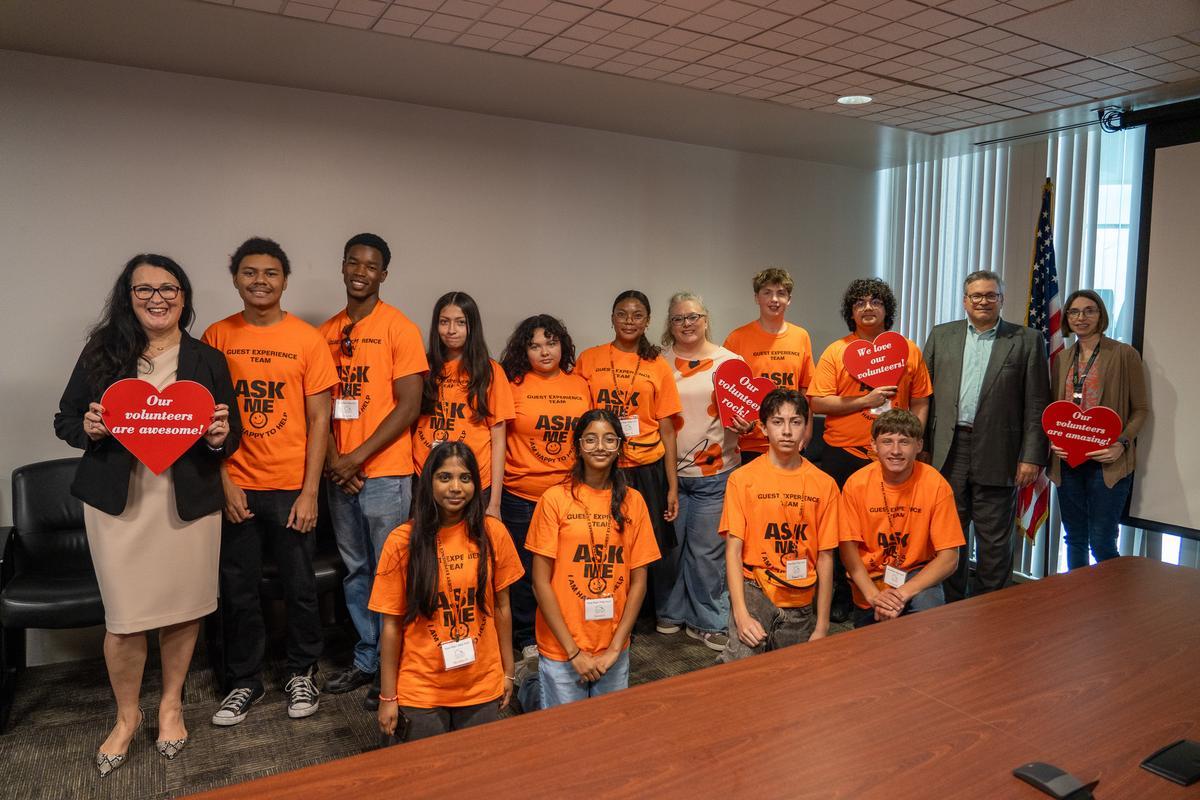Bush Airport: Where teenagers learn the art of the welcome
In a pilot program at Bush Airport, 20 high school students traded summer break for 800 hours of guiding, listening and making travel feel a little less overwhelming.
Aug 13, 2025
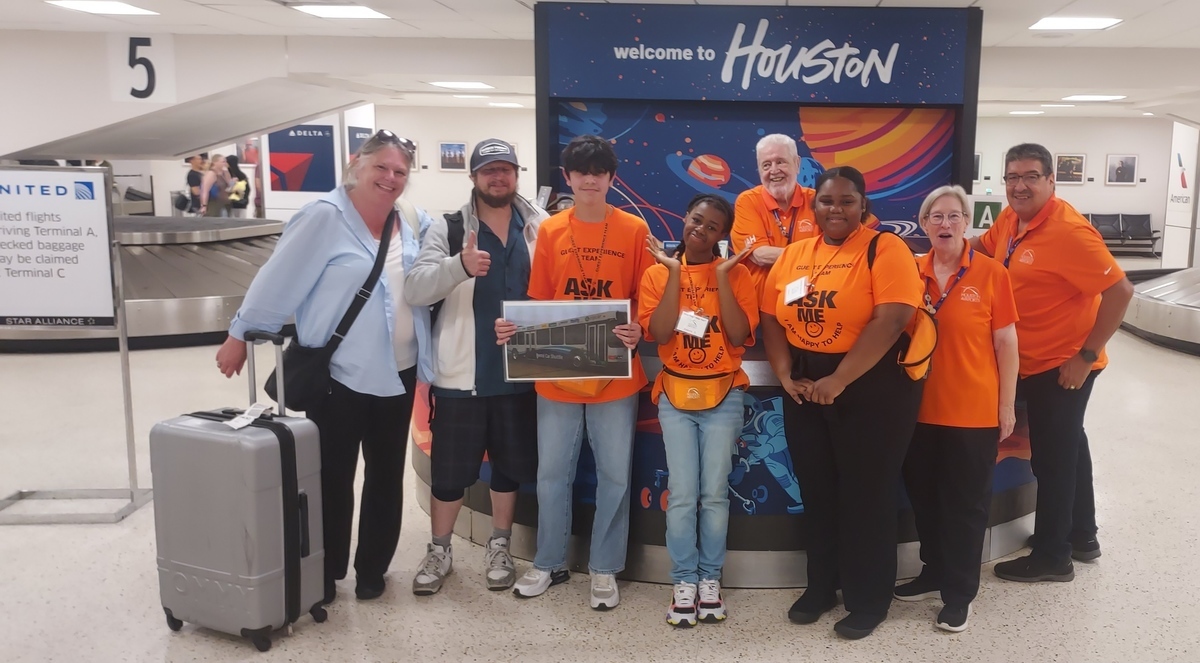
In the middle of Houston’s busiest airport, 20 teenagers entered a world defined by constant motion. The echo of rolling suitcases, the language of gate announcements and the flow of travelers from every corner of the globe became their summer soundtrack.
The Houston Airports Teen Volunteer Program—a pilot initiative open only to children of Houston Airports employees at George Bush Intercontinental Airport (IAH)—launched to do more than fill a schedule. Under the guidance of Ella Ghica, manager of the volunteer outreach program for Houston Airports, it offered high school students a front-row seat to one of the city's most complex operations.
“This was a unique opportunity to step into a working airport, meet people from all over the world and be part of their journey,” Ghica said. “It’s not just about answering questions. It’s about creating moments where someone feels welcomed and cared for in an unfamiliar place.”
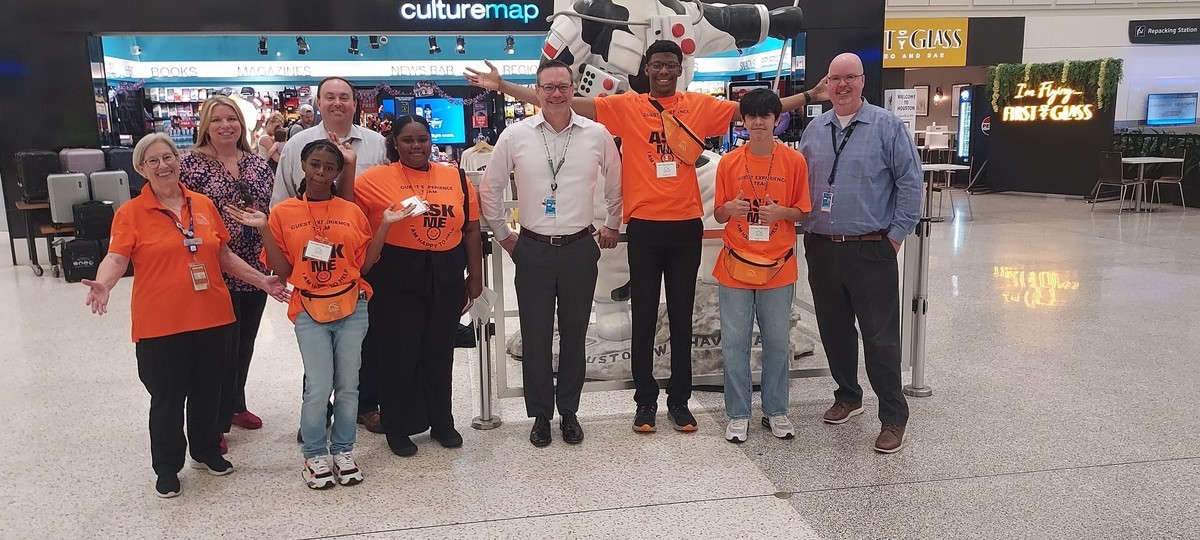
For 10 weeks, the teens worked pre-security, greeting passengers and answering questions. The work was granular: wayfinding, baggage claim assistance, lost items and guiding travelers to ground transportation.
The numbers tell part of the story: 812 hours total—196 in June, 468 in July, 148 in August.
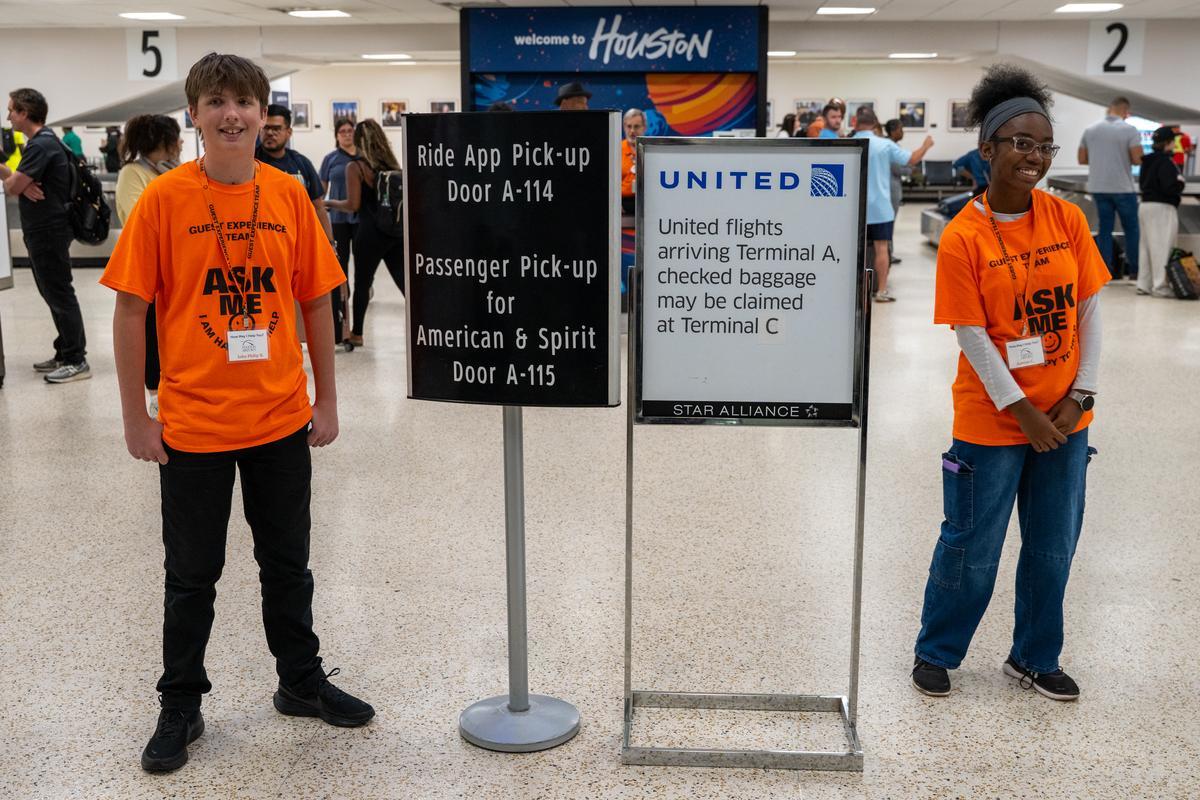
But Ghica insists the deeper story is in the transformations she saw. “I am very proud of each of them. Their confidence level has changed tremendously, and their communication skills have grown as they’ve learned to actively listen.”
LEARN MORE | Houston Airports Volunteer Ambassadors
The teenagers, for their part, recall flashes of connection in the chaos. “A couple of seconds of my time and kindness made a big impact. I love it,” one wrote in the program survey. Another remembered finding the right terminal for a family with two small children after they had already been to two wrong ones. “They were stressed and exhausted, but by the time we got there, they were smiling again.”
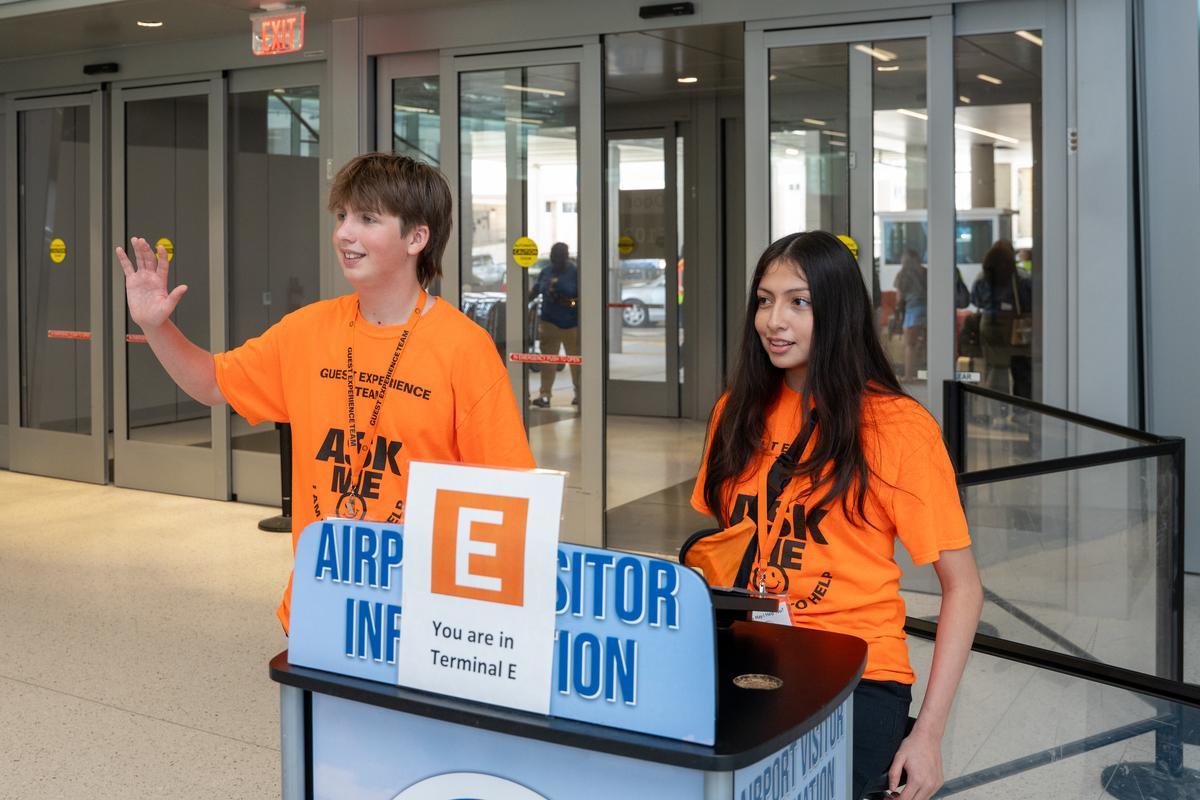
For some, the summer was about navigating cultural and language barriers. “I helped a lady who only spoke Spanish find someone who could guide her,” a volunteer recalled. “Even though I did very little of the actual assistance, she thanked me anyway for finding help in her dialect.” Others were struck by the intimacy of travel itself. “Seeing people reunite and being the first to say, ‘Welcome to Houston’ made me realize how important it is to be kind to everyone,” one teen reflected. Another described reuniting a man with his family as “the best feeling I had this summer.”
Kelly Woodward, chief operating officer for Houston Airports, sees the program as an entry point into a world far bigger than the job descriptions most people associate with aviation. “Working at an airport is about so much more than pilots and planes,” she said. “These teens saw firsthand how customer service shapes the passenger experience. A warm welcome, clear directions or a smile at the right moment can make all the difference in someone’s journey.”
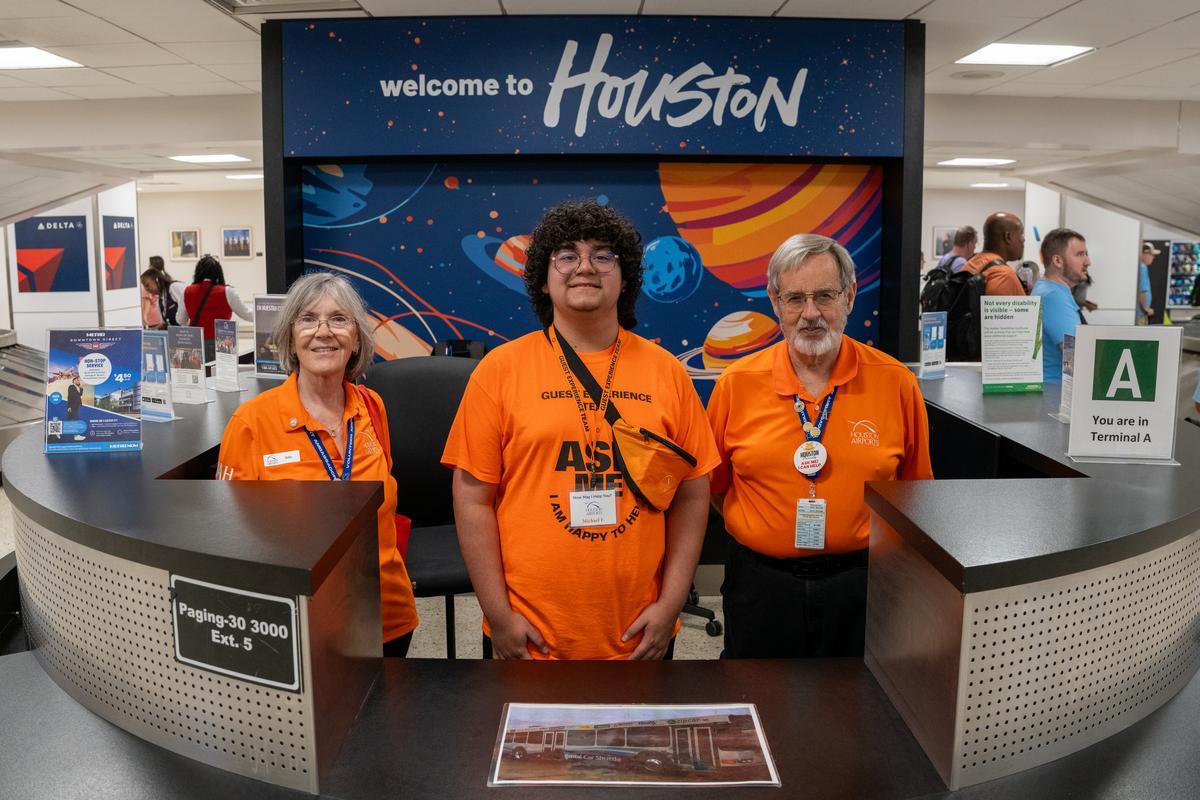
Names and faces began to emerge in the terminal. Ashton remembered Ghica’s constant reminder: “Give everyone coming to Houston a big, friendly Houston smile.” Jackson found his joy in the feeling itself: “If you enjoy the warm, fuzzy feeling of helping people, you’ll enjoy volunteering at the airport.” Josie, whose parents work at IAH, found the unpredictability intoxicating: “Every day there’s something new and it’s fun.”
Passengers noticed, too. On July 30, someone in Terminal A Baggage Claim took the time to send feedback through the Houston Airports online portal: “One of the Teen Volunteer Ambassadors was extremely nice and helpful with my needs. I was having troubles connecting to Wi-Fi and he was not only very knowledgeable he was also customer service focused. I love this program.”
On July 10, another traveler described the teens they encountered as “polite, well-informed and patient,” adding that “the ones we encountered were very impressive.”
The program will return next summer. Ghica hopes to see many of these same teens back in the terminal, ready to pick up where they left off. Because in an industry that runs on efficiency and logistics, the program is a reminder of something more enduring. In the fleeting space of an airport, a moment of human connection can carry as much weight as the journey itself.
